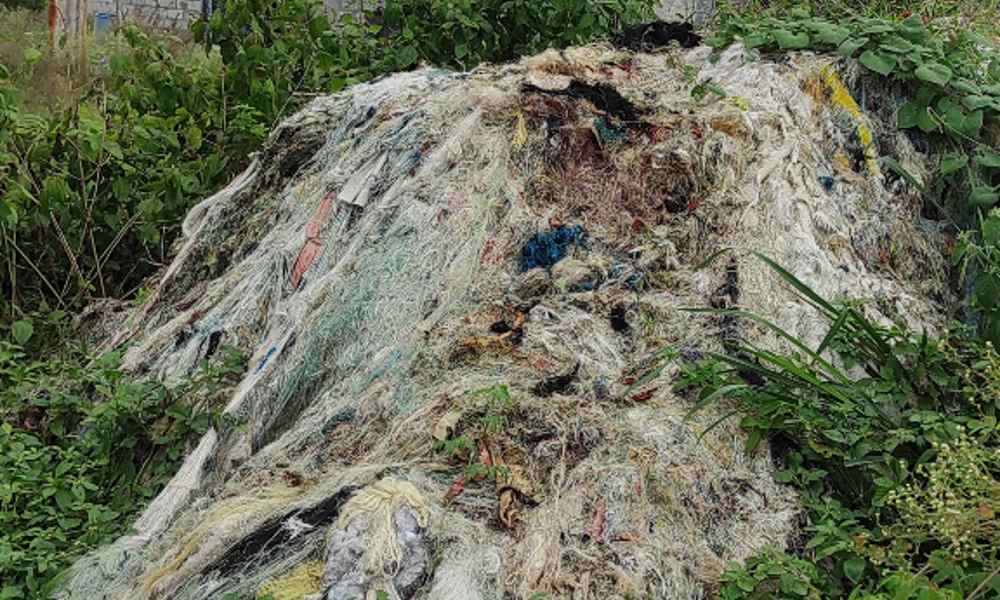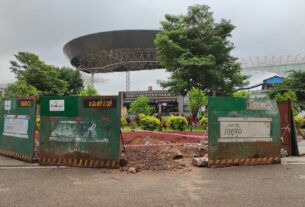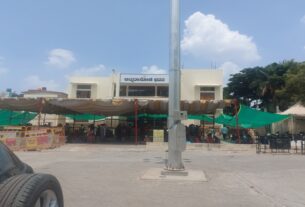According to the Department of Handlooms and Textiles, Karnataka’s share of of the national garment production amounts to 20 percent and is valued at around Rs. 75 crores.
Bangalore is lagging in the effective management of textile waste produced within the city. Saahas Zero Waste, an organization focusing on waste management, reports that Bangalore generates 220 tonnes of textile waste daily, contributing to four percent of the city’s municipal solid waste.
Krishna, operator of Dry Waste Collection Centres (DWCC),Domlur, highlighted that the primary challenge for the separate collection of textile waste is the lack of funds and training.
In 2018, various DWCCs started collecting textile waste separately. However, currently, only eight DWCCs are doing this. Between February and December 2023, these eight DWCCs collected a total of 1,31,436 kilograms of textile waste from different parts of the city.
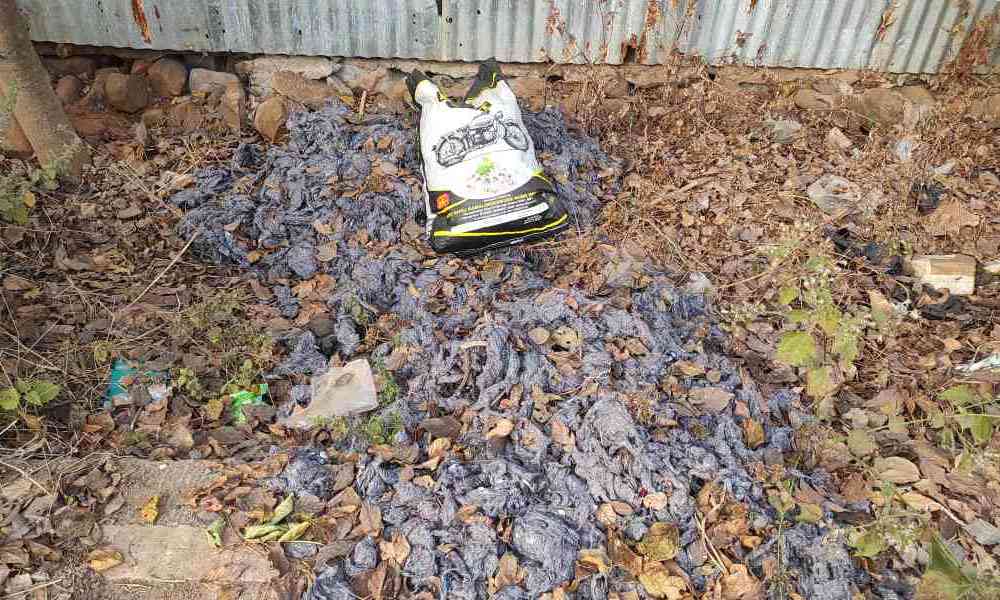
Textile wastes are not collected separately in the city, said Praveen, Chief Engineer, Department of Solid Waste Management, BBMP. “It is considered as dry waste and collected alongside other wastes,” he said.
He further mentioned that textile waste is often collected by waste pickers and sent to Dry Waste Collection Centres (DWCC) before being sent to various recycling units.
Pre-consumer textile waste from small tailors are mainly collected by waste collectors from Bruhat Bengaluru Mahanagara Palike (BBMP). Meena, a tailor from Bapuji Nagar said that she usually gives the waste cloth from her shop to waste collectors or discards it in the common waste bin in the area.
Jagadish, a tailor from Deepanjali Nagar had a similar opinion. He said, “Usually I give the waste cloth to the people living around here and sometimes I give it to the waste pickers from BBMP, along with other wastes.”
However, some tailors like Jothi, recycle the cloth waste generated from their shop by making pillows out of them.
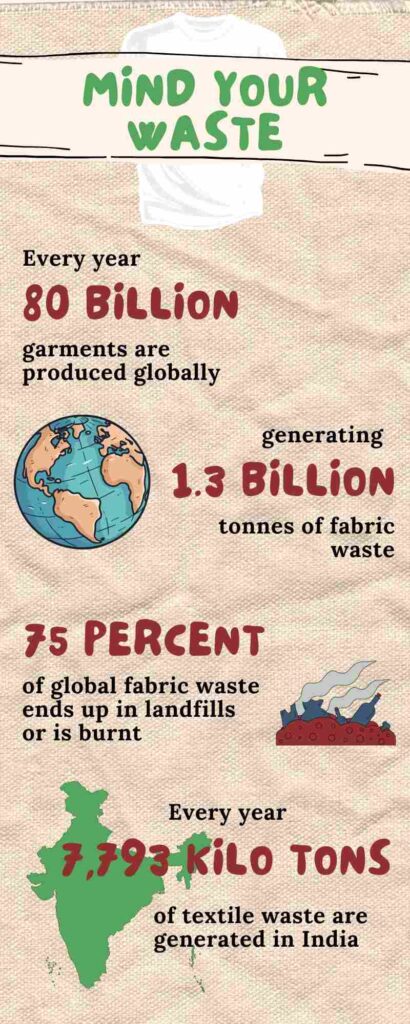
Mani Venkateshappa, the proprietor of AB Clothing Co., a men’s apparel production company, mentioned that the company generates three tons of textile waste each month, which is then collected by recyclers.
A spokesperson from SNF Garments Inc. said, “As a small-scale manufacturer, we generate a comparatively lower amount of textile waste, with the majority being cotton. This waste is collected by recyclers who repurpose it into items such as bed rugs, pillows, and cleaning cloths for various purposes like garage use.”
An official from the Karnataka State Pollution Control Board (KSPCB), said that textile waste is not regulated as in most instances it is reused by various recycling units or sent to cement factories for incineration. We haven’t received any complaints of textile waste being dumped on the city premises, he added.
However, a report compiled by Hasiru Dala in 2019, an organization working in Solid Waste Management in the city, mentions that the availability of surplus non-recyclable waste often leads to the cement factories no longer accepting them, which it in turn leads to these materials reaching the landfills.
According to The Indian Textile Journal, every year, 80 billion garments are made globally generating 1.3 billion tonnes of fabric waste. However, 75 percent of global fabric waste is discarded untreated and ends up in landfills or is burnt thereby polluting both land and water.
A 2023, article, further mentions that at present over 92 million tonnes of textile waste, ends up in landfills and rivers. The number is predicted to increase to over 134 million tonnes by 2030.
Similarly, a 2023 report mentions that India generates 7,793 kilo tons of textile waste annually. This includes 3,265 kilotons of pre-consumer waste, 3,944 kilo tons of post-consumer waste and approximately 584 kilotons of imported waste.
Textile waste, is a major problem that needs to be looked at and dealt with properly, said Krithika Viswanathan, Marketing Lead in the Saahas Zero Waste. “Authorities must ensure that good policies are in place which encourage correct management of textile waste through formal textile recovery facilities,” she added.
She suggests giving tax breaks to formal textile recovery facilities, along with other measures to encourage formal management of textile waste.
Almitra H Patel, an environmentalist and member of the Supreme Court Committee for Solid Waste Management of India suggests setting up clothes collection drives by welfare associations in residential areas. The clothes collected would then be transferred to recycling units in the city. She also suggests placing separate bags next to sewing machines in tailoring units to facilitate separate collection of cotton and other mixed cloth waste.
She further recommends collecting textile waste separately, rather than mixing it with other waste and making it difficult to segregate. “Segregated transportation of textile waste is the key,” textile waste should be collected and transported separately, she added.
She further highlighted the risk of textile waste getting mixed up with other waste in landfills. Methane produced during the decomposition of food waste is highly flammable and fabric waste can exacerbate the situation by adding fuel to the fire.
Krithika recommends consumers adopt conscious garment purchasing habits as higher consumption contributes to increased textile waste generation. Shifting to alternatives such as borrowing clothes from friends, second-hand shopping, and swap shopping can decrease the demand for virgin materials in the market, ultimately reducing textile waste.

